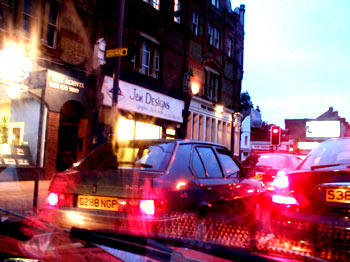
According to Reuters,
“The [US] government will not require recorders in autos but said on Monday that car makers must tell consumers when technology that tracks speed, braking and other measurements is in the new vehicles they buy.
The National Highway Traffic Safety Administration regulation standardizes recorder content and sets guidelines for how the information should be disclosed.…
Safety experts, consumer groups and insurance companies have long pressed the agency to mandate recorders in cars, but industry has responded voluntarily in recent years. About two-thirds of the new vehicles now produced each year contain the device that is connected to air bag systems.
…
Under the new rules, auto recorders must track vehicle speed, acceleration, and deceleration, braking, steering and some air bag functions. In some cases data on vehicle roll angle, steering inputs, and passenger safety belt use will be recorded.
…
Rae Tyson, a NHTSA spokesman, said… that recorder information is private property that cannot be downloaded without permission of the vehicle owner.”
Let’s get this straight: these are black boxes intended to help compile safety data and undestand accidents, and the data will not be shared with insurance companies except with the car owner’s pemission, so drivers have nothing to worry about?
Or will it simply be the case that signing up for car insurance will require you “voluntarily” to allow the insurance company to access your data?
Are these actually that different to insurance black boxes??
Another point which stands out of the story, since reading Scott Craver‘s Privacy Ceiling outline, is that the black box is legally optional yet two-thirds of all new cars in the US have them.
In a liability culture, that violates Scott’s 3rd principle:
Do not bother to design a system or business model that balances user privacy with [potential external] demands. All this does is insert an architecture of monitoring or control, for later abuse. In other words, design an architecture for privacy alone. Anything you put in there… will one day be used to its full extent.
If the black boxes are in every car a company (such as GM) makes, that leaves the company open to certain, ah, liability issues. Say NHTSA analysis of accident data shows that a particular model has peculiarities related to, e.g. “vehicle roll angle and steering inputs” as tracked by the black box (or, even worse, inconsistencies related to this issue, with some cars having a problem and others not).
That car manufacturer is instantly plunged into the spotlight as a maker of dangerous products, even if the problem is not necessarily as simple as it seems (certain types of car attract better drivers than others, for example), and it will be very difficult to defend the issue and deal with lawsuits, since the information is now publicly available. (Conversely, having that amount of information should also make it easier for the company to analyse and respond to the problem).
Yet they could have “got away with it” by not fitting the black boxes in the first place. That may be a Ford Pinto-esque, bury-your-head-in-the-sand approach, but when company planners look at the potential upside and downside of any strategy decision, the decision to fit black boxes voluntarily may not seem such a sensible one in view of the liabilities to which it exposes the company.
(Reuters link via Open Rights Group discussion)
2 Comments